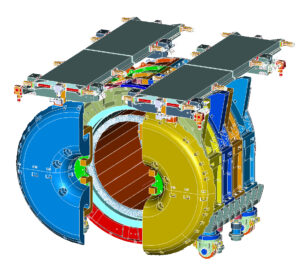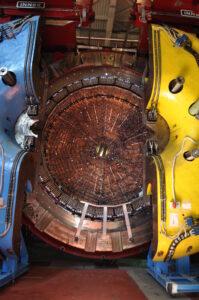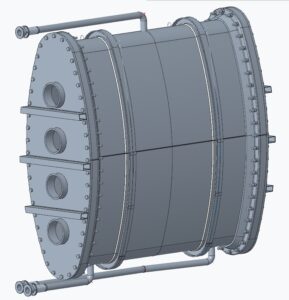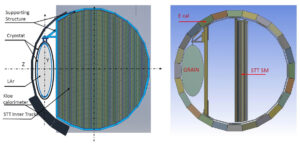PageContent
SAND
System for on-Axis Neutrino Detection
In this project, the service deals with the modelling of the new detector made up of some already existing parts and others that must be designed entirely.
At the beginning, we started from the 3D modeling of the component parts of KLOE (K–LOng Experiment), as there were only 2D drawings. And now we are collaborating with the working group (SAND ECAL WG) both reorganizing the old paper documentation and updating the model of the experiment, now in the disassembly phase, which also involves technicians from other services in our section such as: Mechanical Workshop, General Technical Service and Electronics Lab able to actively contribute each one with their own skills.
 |
 |
All this work aims to give a second life to this particle detector by reusing the calorimeter, the magnet and its “yoke” that is a large iron structure that encloses the entire detector.
As a design service, we are proceeding with the modeling of the new detector and its structure necessary to support it. Its name is: GRAIN (GRanular Argon for Interaction of Neutrinos); it is a cryostat composed of two vessels: the internal vessel is made by steel AISI 316 LN while the external one is a casing in composite material. This detector will be placed inside the KLOE’s calorimeter.
 |
 |
Inside the first steel vessel, kept at a temperature of -185,85°C, immersed in 1 ton of Liquid Argon, there is an optical detector made of lenses arranged according to a matrix, defined through analysis so to cover most of the available surface. The liquid Argon purification and recirculation plant was specially designed with the help of a cryogenics expert. A vacuum of approximately 10-4-10-5 bar is created in the internal volume between the two vessels.
Inside KLOE, there will be not only GRAIN, but also another detector called STT (Straw Tube Target tracker) an internal tracker composed of 92 modules of different sizes to fit inside the calorimeter. This detector requires support that is currently being studied by our service.
 |












